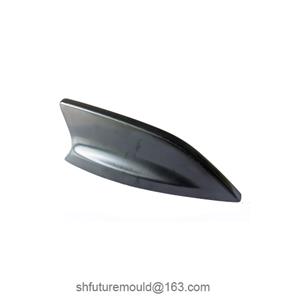Process Improvements to Prevent Black Spot Defects in Injection Molding
Black spot defects are a common issue in injection molding that can negatively affect the appearance and quality of products. By optimizing processes, these defects can be effectively reduced or eliminated.
Raw Material Improvements
1. Drying Materials
Use specialized dryers to thoroughly dry materials, particularly hygroscopic materials like PC and PA, to prevent decomposition or oxidation caused by moisture.
Ensure that drying temperature and time are appropriate for the specific material properties.
2. Filtering Materials
Use screens to filter raw materials before feeding them into the machine to remove impurities and foreign objects.
Employ melt filters during processing to filter fine contaminants from the material flow.
3. Using Stable Materials
Avoid using expired or improperly stored raw materials.
Equipment Improvements
1. Cleaning Barrels and Screws
Regularly clean the barrel and screw to remove carbonized deposits and residual material, preventing black spots caused by carbonized remnants at high temperatures.
Perform thorough cleaning during machine shutdowns, particularly when switching colors or materials.
2. Equipment Maintenance
Inspect the screw, barrel, and mold surfaces regularly for wear or oxidation layers, and repair or replace them as necessary.
Ensure that temperature sensors and heating elements function correctly to prevent localized overheating.
Process Parameter Optimization
1. Temperature Settings
Set appropriate temperatures for each barrel zone based on material properties to avoid decomposition or carbonization due to excessive heat.
Use a gradual cooling strategy to prevent overheating during the injection cycle.
2. Controlling Injection Pressure and Speed
Reduce back pressure to lower screw shear force, minimizing the risk of material degradation from excessive shear heat.
Control injection speed to prevent localized overheating or gas retention caused by rapid mold filling.
Mold Improvements
1. Mold Cleaning
Clean mold surfaces regularly to prevent the accumulation of dirt, oxides, and grease.
Avoid using low-quality release agents or lubricants that may carbonize and form black spots.
2. Optimizing Mold Venting
Ensure venting channels are clear to prevent gas retention in the cavity, which can cause material combustion or carbonization.
Add venting holes or optimize venting groove designs as needed.
Environmental and Operational Management
1. Clean Production Environment
Maintain a dust-free production environment to prevent external contaminants from entering the raw materials or molds.
Keep feeding, material changing, and cleaning areas clean and tidy.
2. Standardized Operations
Establish and implement standardized operating procedures to avoid human errors that may cause contamination.
Provide employee training to enhance awareness of the causes of black spot defects and how to address them.




